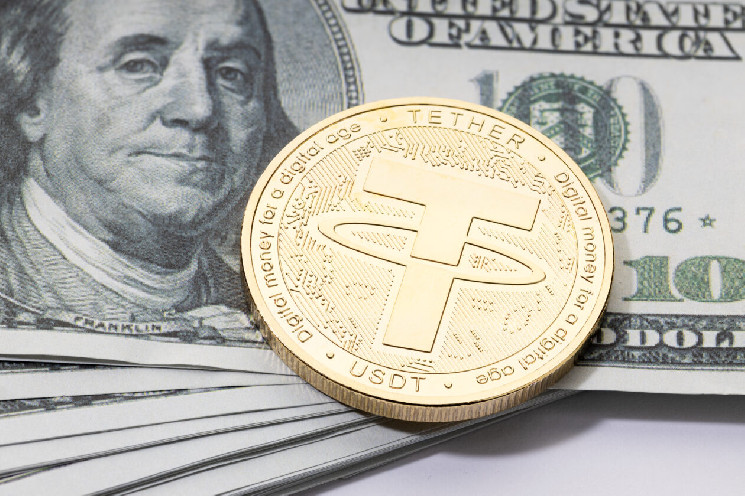Binance stablecoin conversion controversial, but what does it mean for users?

Binance Global, the world’s largest crypto exchange, raised eyebrows this month when it said it would convert its customer’s holdings in three stablecoins into its own BUSD stablecoin starting from the end of September.
The move, which will also end spot, future and margin trading in the three stablecoins, drew comparisons to how users would react to a bank deciding to change their cash deposits from one currency into another, but some analysts see the dynamics as quite different.
“I really don’t think it is going to change the supply, the distribution, even the behavior of investors when it comes to stablecoins specifically,” said Justin d’Anethan, institutional sales director at digital asset trader Amber Group. “I don’t think it’s going to affect [many] investors.”
Stablecoins got the name because their value is pegged to another non-crypto asset, such as the U.S. dollar or gold. They are an entry point for many new investors in cryptocurrencies, offering market access without the volatility of other tokens.
Partly due to the unilateral nature of the Binance decision, some investors did question if the move would shake trust in stablecoins and shift trading patterns.
As stablecoins account for three of the top 10 cryptocurrencies by market capitalization, disruption to trade could ripple through the entire crypto market, which is still recovering from the multibillion-dollar collapse of the so-called algorithmic Terra stablecoin in May, which wasn’t pegged to any non-crypto asset. Terra imploded with its paired cryptocurrency Luna.
Stable as a table
Binance will convert all customers’ current and future holdings of USD Coin (USDC) – the second-largest stablecoin with a market cap of US$50 billion – into BUSD, which is the world’s third-largest stablecoin in its own right with a market cap of US$20.5 billion.
The same procedure will follow for Pax Dollar (USDP), market cap of just under US$1 billion, and True USD (TUSD), which has a market cap of US$1 billion. All trades involving these three tokens on the Binance platform would be denominated in BUSD.
Customers would still be able to cash out of the platform in any of those stablecoins. So, as far as d’Anethan sees it, they are getting an acceptable deal.
“So, the only thing that Binance is doing, and some would say it’s actually offering a service, of a 1:1 conversion between those stablecoins and BUSD,” said d’Anethan, adding “so you’ll have more liquidity, faster transactions [and] less slippage, essentially.”
His comments mirror Binance’s statement on the matter, which said the move was designed to “enhance liquidity and capital efficiency for users.”
Left out
But absent from that list of stablecoins targeted by Binance was Tether, or USDT, the world’s largest stablecoin with a market capitalization of more than US$67 billion. So why was it not included?
Kasper Vandeloock chief executive officer of Musca Capital, a Brussels-based quantitative trader in digital assets, said he thinks he has the answer and it’s linked to possible arbitrage.
All three of the selected stablecoins are redeemable without any fees, as they are backed 1:1 with mainly U.S. Treasury bonds.
USDT, however, requires a redemption or creation fee of 0.1% for each fiat withdrawal and deposit when it is created or redeemed through Tether, the coin’s issuer, with a minimum deposit of US$100,000
This means its price on Binance is not always exactly US$1, and so is not always redeemable with other stablecoins that match US$1 more consistently.
“For Binance, they would be constantly losing money and people would arbitrage the hell out of it,” Vanderlook said, adding he agreed the Binance move has benefits for investors as it will centralize liquidity.
Not everyone buys that theory, including Lachlan Feeney, chief executive officer and founder of Australian blockchain development agency, Labrys Group Pty Ltd.
Untethered
“It’s a strategy by Binance to use their exchange dominance to boost and strengthen their own stablecoin. And that will have repercussions for the other stablecoins out there,” said Feeney, adding that that would include Tether.
As one of the oldest stablecoins, Tether has long been the standard stablecoin for conducting trades, but Binance’s move could shake confidence in the token, said Feeney.
Data from CoinGecko shows that Bitcoin/Tether trading pairs on Binance were roughly US$5.8 billion in the 24 hours to 2 p.m. in Hong Kong, compared to only US$256 million for Bitcoin/USDC.
But as USDC and the two other stablecoins are consolidated under BUSD, that gap is expected to narrow significantly.
“The question is going to be if Tether is not that default trading pair or trading denominator anymore, what does that mean for the stablecoin and its market cap moving forward?” Feeney said.
Vandelook said he hopes that Binance creates other options for investors beyond just BUSD, especially for retail investors. Otherwise, there’s a risk that the only stablecoin they trust is BUSD because that’s the one they use all the time, he said.
Feeney added that the Binance move could create a new dynamic within the crypto industry where centralized exchanges begin to prioritize and silo stablecoins that they have some connection with.
USDC is a product of blockchain financial services company Circle Inc. and Coinbase, the largest U.S.-based exchange. USDT was created by Tether and crypto exchange Bitfinex., which are both owned by Hong Kong-based company iFinex Inc.
“It’ll be interesting to see whether they try and pull off something similar,” said Feeney, “but they might wait and see what the reaction is with the community, whether they’re happy with this move from Binance.”






 Bitcoin
Bitcoin  Ethereum
Ethereum  Tether
Tether  USDC
USDC  Dogecoin
Dogecoin  TRON
TRON  Cardano
Cardano  Stellar
Stellar  Chainlink
Chainlink  Hedera
Hedera  Bitcoin Cash
Bitcoin Cash  Litecoin
Litecoin  LEO Token
LEO Token  Monero
Monero  Cronos
Cronos  Dai
Dai  Ethereum Classic
Ethereum Classic  OKB
OKB  Algorand
Algorand  VeChain
VeChain  Cosmos Hub
Cosmos Hub  Gate
Gate  KuCoin
KuCoin  Stacks
Stacks  Tezos
Tezos  Theta Network
Theta Network  IOTA
IOTA  Tether Gold
Tether Gold  Zcash
Zcash  TrueUSD
TrueUSD  NEO
NEO  Polygon
Polygon  Decred
Decred  Dash
Dash  Ravencoin
Ravencoin  Qtum
Qtum  Basic Attention
Basic Attention  Zilliqa
Zilliqa  0x Protocol
0x Protocol  Synthetix Network
Synthetix Network  Holo
Holo  Siacoin
Siacoin  DigiByte
DigiByte  Enjin Coin
Enjin Coin  Ontology
Ontology  Nano
Nano  Status
Status  Hive
Hive  Waves
Waves  Lisk
Lisk  Steem
Steem  Numeraire
Numeraire  Pax Dollar
Pax Dollar  BUSD
BUSD  Huobi
Huobi  NEM
NEM  OMG Network
OMG Network  Bitcoin Gold
Bitcoin Gold  Ren
Ren  Bitcoin Diamond
Bitcoin Diamond  Augur
Augur